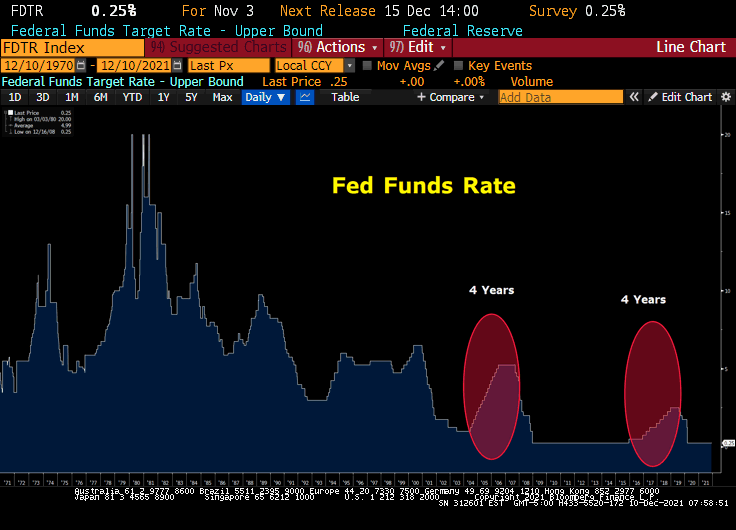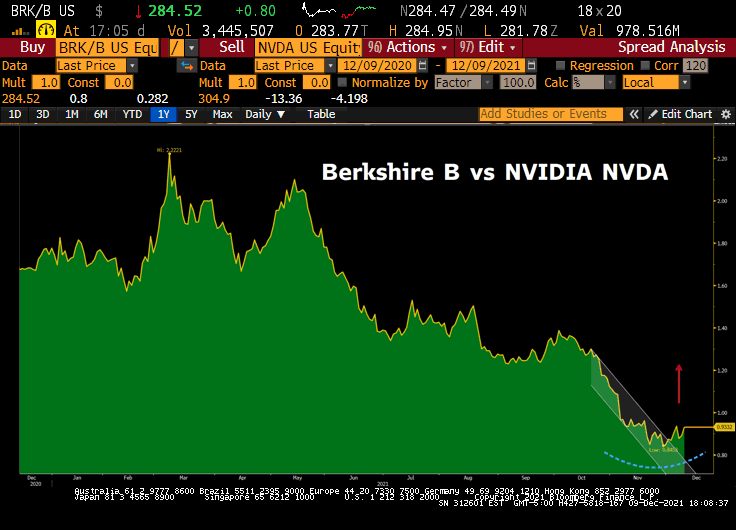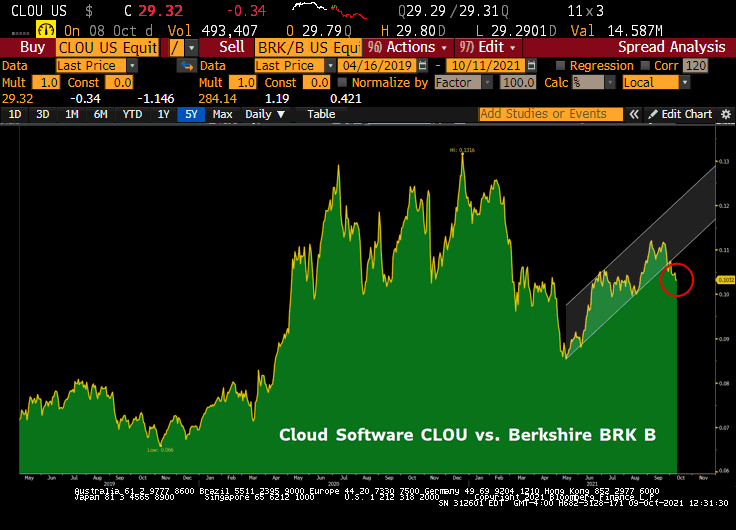Institutional investors can join our live chat on Bloomberg, a groundbreaking venue, just email tatiana@thebeartrapsreport.com – Thank you.
Lawrence McDonald is the New York Times Bestselling Author of “A Colossal Failure of Common Sense” – The Lehman Brothers Inside Story – one of the best-selling business books in the world, now published in 12 languages – top 20 all-time at the CFA Institute.
If the Fed’s gravy train had been this aggressive in 2008, Bernie Madoff would still be sipping mint juleps in the Hamptons. Lehman NEVER would’ve failed. Central bank largess is protecting Enron’s out there – as accommodation is withdrawn – garbage will float to the top. The toxicity is off the charts this cycle – Dozens of Madoffs and Enrons – it is sickening.
All you need to know is one important fact – there is $30T more debt on earth today sub 2% in yield – than there was in the last two hiking cycles. The below 2% part is important because it speaks to colossal convexity in today´s bond market. Everyone knows – with interest rates UP, bond prices go DOWN. The problem is – with trillions more debt on earth BELOW 2% – just ONE little 25bps rate hike carries the destructive forces of 4 hikes 15 years ago!!! The bond market is telling us this, screaming at us. The U.S. 30 year bond yield is 1.87% – while the 20-year is yielding 1.91%. Eurodollar futures have recently started to price in rate cuts in 2024-2026, NOT hikes. The last two rate-hiking syles were FOUR years-long – NOT this time.
Rate Hiking Cycles
 The bond market is telling us, the Fed´s ability to pull back accommodation over an extended period of time is HIGHLY limited. Nearly 71% of the U.S. Federal budget is interest spending and entitlement spending vs. 30% thirty years ago. Close to 14% of Americans are on Food Stamps today vs. near 3% in 2000. There are bills to pay, the Fed´s hands are tied.
The bond market is telling us, the Fed´s ability to pull back accommodation over an extended period of time is HIGHLY limited. Nearly 71% of the U.S. Federal budget is interest spending and entitlement spending vs. 30% thirty years ago. Close to 14% of Americans are on Food Stamps today vs. near 3% in 2000. There are bills to pay, the Fed´s hands are tied.
The Secret
The dirtiest secret in economics is that it provides no coherent, provable, and universally accepted theory of recession. The reality is, economists, don’t actually know what causes recessions. The reality is, there may be no single cause. It’s even hard to wrap your brain around how you are supposed to approach the data. For example, if you look at rate hikes and when recessions occur, it’s not clear that rate hikes cause recessions. Certainly, about 75% of the time quick rate hike sequences were followed by recessions. But then, 25% of the time they weren’t.
Well, a cause is something that works 100% of the time. Certain predictable chemical reactions work 100%. Entire industries and thus economies are built on these industries and their 100% certain causalities. They wouldn’t exist if the criterion for a cause = 75%. As traders, we are delighted if we find something that works 75% of the time and so too readily falls into the trap of confounding probability with causality.
So, we can accept that rate hikes are probably followed by recessions. We think the explanation, perhaps, is that a withdrawal of lending by banks causes recessions. And they stop making loans when they feel, sometimes rationally, sometimes irrationally, that if they make loans they will lose money. Sometimes this feeling happens when interest rates rise. Sometimes it doesn’t. 75% of the time in a rising interest rate environment, banks get the feeling making loans isn’t a grand idea.
Well, why does that happen? There are lots of reasons unique to each cycle, unfortunately, which is why there is no grand unified theory of recession. But clearly, if interest rate hikes go too far, somehow the lending proposition becomes less viable. Again, how do we know when the hikes are too far? We don’t, until after the fact. However, we can say that if a bank’s model is to create money by borrowing short term and lending long term, a negative sloping yield curve will kill loan creation. And what causes a yield curve to invert?
The belief that the demand for money will steadily decline i.e. the belief that there will be a recession. So it’s circular, far from rational. Or it could simply be that a yield curve inverts because traders think inflation will be lower later, causing the curve to invert, thereby causing banks to restrain lending, thereby, in turn, causing a recession. In which case traders’ opinions about distant inflation trigger recessions, which seems a tad bizarre but the world is a crazy place so perhaps it’s true. But yield curves aren’t perfect predictors either. And they change. We do know that if growth is greater than the cost of capital that is less likely to cause a recession than if growth is less than the cost of capital. That does seem logical. So if rates rise less quickly than growth, it seems reasonable that there will be no recession. But growth rates can be a moving target, so a rate hike that is appropriate now may be inappropriate two months later. So we don’t know. But we have the odds: 75% of the time rate hike sequences lead to recessions.
We would only add that when rate hikes are accompanied by an increase in bank reserves then recessions happen for sure. This is why we are so impressed by China’s recent lowering of reserve requirements for its banks. To us, that is a buy signal. Certainly in the US when bank reserve requirements are lowered, equity bull markets follow.
Value vs. Growth – Late Stage
 Value vs. Growth the Epic Final Days of this Battle – TSLA is Through key support – 20% off sale – Tesla TSLA is going through the recent lows pre-market – observation of the week – the 25-30x sales LARGE caps (NVDA – TSLA) – are playing CATCH UP with the COUNTLESS 40-100x sales garbage that is now trading 10-20x (ARKK names). So we have a washout in the Nasdaq with 300+ companies moving from 40-100x sales to 10-20x sales and NVDA still sits unched at 30x sales?? – Large-cap stretched names are playing catch up this week.
Value vs. Growth the Epic Final Days of this Battle – TSLA is Through key support – 20% off sale – Tesla TSLA is going through the recent lows pre-market – observation of the week – the 25-30x sales LARGE caps (NVDA – TSLA) – are playing CATCH UP with the COUNTLESS 40-100x sales garbage that is now trading 10-20x (ARKK names). So we have a washout in the Nasdaq with 300+ companies moving from 40-100x sales to 10-20x sales and NVDA still sits unched at 30x sales?? – Large-cap stretched names are playing catch up this week.
Value vs. Growth – Early Stage
 Close to 20% off their highs – hot software names are in pain. The Nasdaq Composite Index is up roughly 15% year-to-date. However, when removing the 5 largest equities, the index is down close to -20% on the year! This shows how large the tail-risk to US equity markets is if the largest names are to see a significant pullback. This is one of the most top-heavy markets in history. As we stressed in January on Real Vision and CNBC – the net present value of FUTURE cash flows is worth A LOT MORE with certain deflation and worth ALOT LESS with certain sustainable inflation.
Close to 20% off their highs – hot software names are in pain. The Nasdaq Composite Index is up roughly 15% year-to-date. However, when removing the 5 largest equities, the index is down close to -20% on the year! This shows how large the tail-risk to US equity markets is if the largest names are to see a significant pullback. This is one of the most top-heavy markets in history. As we stressed in January on Real Vision and CNBC – the net present value of FUTURE cash flows is worth A LOT MORE with certain deflation and worth ALOT LESS with certain sustainable inflation.
Institutional investors can join our live chat on Bloomberg, a groundbreaking venue, just email tatiana@thebeartrapsreport.com – Thank you. LGM


